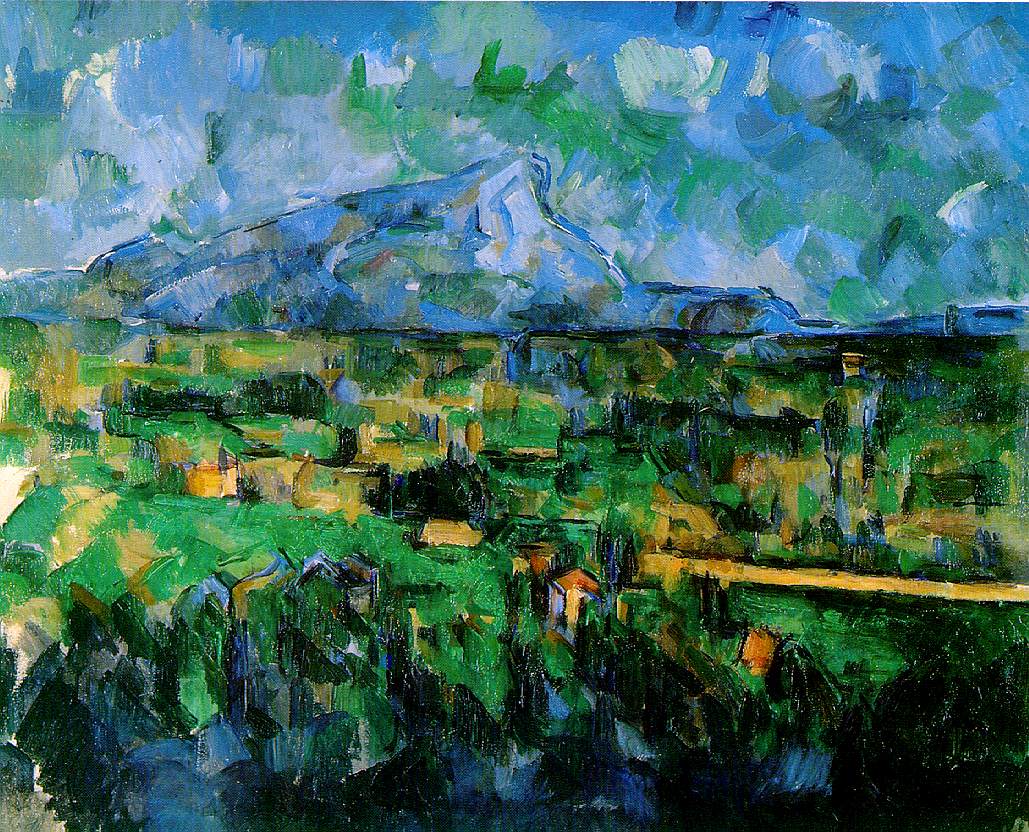Mont Sainte-Victoire
7:00 AM |
| Paul Cezanne, Mont Sainte-Victoire, 1902 |
She was the love of Paul Cezanne's life. They grew up together, in the small town of Aix-en-Provence. Time and time again, she would model for him at all angles, never shying away from her beauty. Decades passed, and he would still visit with paints and a canvas in hand. Though the years had aged him, she never did. Perhaps he found her timeless charm irresistible. Maybe it was her height (3,317 feet tall) that enraptured him so. What about her gentle, quiet demeanor? After all, mountains can't speak.
Cezanne was born moody. He simply couldn't stand it whenever his little sisters or mother bossed him around, but was glad to let them do all the work. Even when painting his mistress, later wife, she appeared cold, stiff, and homely. It's probably pretty clear by now that Cezanne had a hard time with people, and he wouldn't hesitant to break ties over pettiness. With his hostile attitude and hermit-like tendencies, of course it makes sense for Cezanne connect so emotionally to Miss Mont Sainte-Victoire. No backtalk, no bossiness, no human feelings. She was "his" best model.
What makes Mont Saint-Victoire so special? There had to be something great about her, considering Cezanne painted her about 60 times. The mountain served as a sort of experimental ground for the artist. He used all sorts of varying techniques, developing the concept of flat-depth. In many of Cezanne's landscapes, he uses space to indicate an understanding of depth. However, he denies his landscapes detail, and therefore giving them a sense of flatness. Only a master painter could so emotionally conjoin these two opposites into one piece.
The Mont Sainte-Victoire series is one of the reasons many artists title Paul Cezanne as the Father of Modern Art. His genius revolutionized the art world, and just like the mountain, his legacy will continue past his death.
0 comments